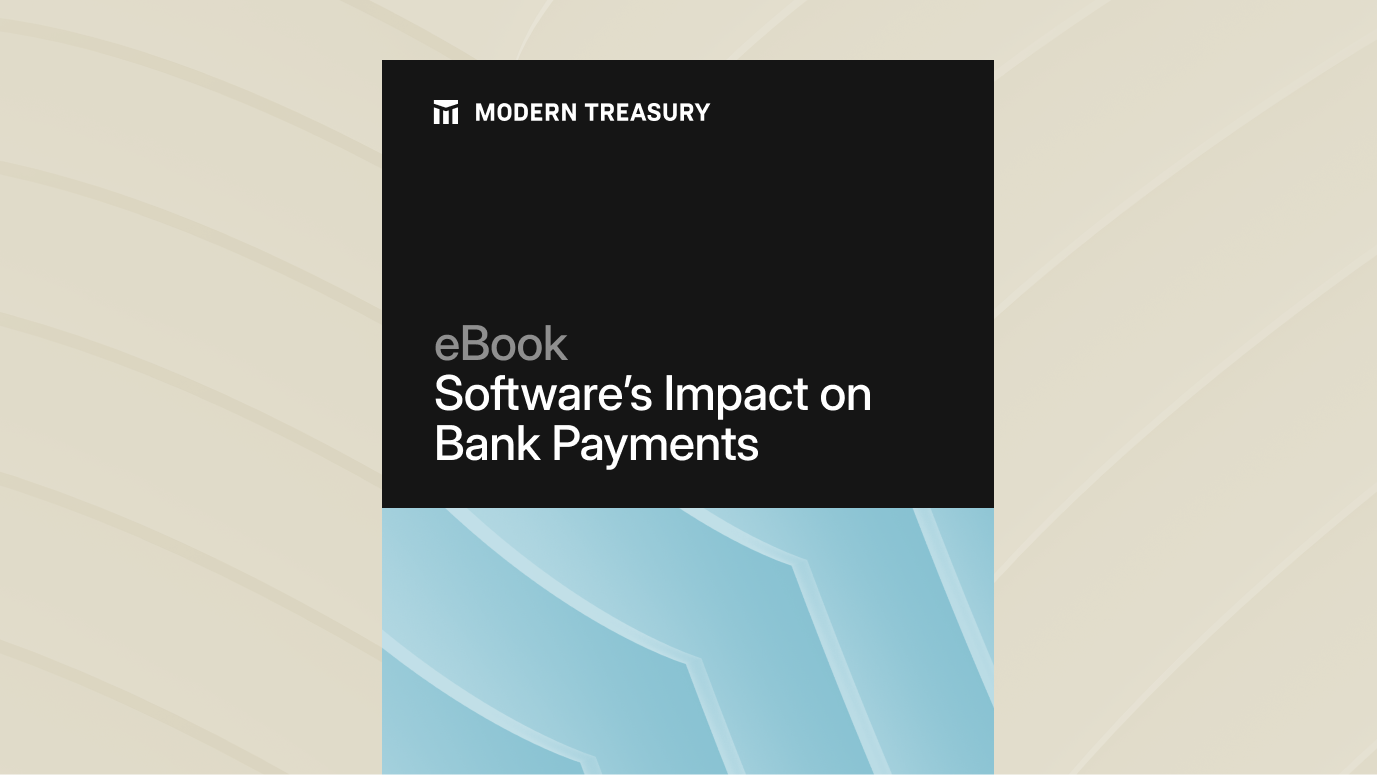Join us at Transfer 2025 to hear how industry leaders are building payments infrastructure for a real-time world.Register Today →
What are Third-Party Payments and Why Do They Matter?
As more companies are embedding payments into their products, payment flows are changing. More than traditional accounts payable and receivable, or first-party payments, there are now third-party payments, where businesses move money on behalf of customers. This post looks at these two payment flows and why they matter.

At Modern Treasury, we’ve built a payment operations platform to help companies embed payments within their applications. Our platform supports clients across industries, use-cases, and sizes. One common theme is that our clients move money within their products.
This post will help explain what this means by walking through two types of payment flows: first-party payments (i.e. payments on behalf of your business), and third-party payments (i.e. payments on behalf of others). We’ll illustrate these differences through the example of Airbnb, and uncover why third-party payments matter for product and revenue teams. Due to trends across the industry, we anticipate that these payment flows will become a common part of how companies move money.
What are First-Party Payments?
First-party transactions are payments made on behalf of a company and its operations. For simplicity, first-party payments can be split into two buckets of transactions: operational payments and financial payments. Operational payments could include payroll, employee expenses, account receivables, and account payables. Financial payments could include M&A transactions, dividends, debt payments, and interest payments on debt facilities. Taken together, first-party payments make up a company’s obligations to its vendors, suppliers, employees, lenders, and investors.
All businesses have first-party payments; they are the bread and butter of corporate transactions. They’re paid from the company's working capital.
What are Third-Party Payments?
Third-Party payments, on the other hand, are payments made on behalf of others, such as clients, users, or partners. Whereas first-party payments are operational or financial payments, third-party payments are referred to as product payments. They are embedded within the product application, part of the company's COGS (Costs of Goods Sold). For example, ClassPass embeds payments within their platform to allow users to pay for yoga and workout classes natively within the application. This is a third-party product payment flow.
Airbnb: An Example
Airbnb is a platform marketplace that connects travelers with hosts. It serves as a good illustration of a company with both first and third-party payment flows.
Airbnb has over 4 million hosts on their platform; their operations span 220 countries. Airbnb’s first-party payments allow them to conduct those operations. These transactions include: employee payroll, their in-house and third-party technology costs, advertising payments to Google and others, call center and support operations, etc. We can see these first-party payments listed within Airbnb’s latest 10k.

Airbnb’s operational activity includes:
- Costs of Revenue: Costs associated with running the Airbnb product, such as third-party data centers (e.g., public cloud), internally developed software, payment processing expenses (e.g., payment operations)..
- Operations and Support: Costs associated with supporting the Airbnb platform, including personnel and third-party infrastructure.
- Product Development: Costs associated with developing the AirBnb platform, including personnel and third-party software and infrastructure costs.
- Sales and Marketing: Costs associated with brand and performance marketing, including personnel and infrastructure costs.
- General and Administrative: Costs associated with management and administrative functions, including legal, accounting, finance, and human resources.
In addition, Airbnb embeds payments within their product to allow travelers to book lodging directly within Airbnb. Let’s walk through how that works. When users confirm their reservations on Airbnb, they pre-pay for a portion of their stay. Airbnb collects that pre-payment and holds those balances on behalf of the hosts until the guest checks-in, which can be weeks later. On the day of check-in, Airbnb initiates the payout to the host and recognizes their portion of the revenue.
As a result of these operations, Airbnb holds a significant amount of user capital. However, because this capital is owned by users—not Airbnb—they record and handle these payments differently than their own working capital. For example, Airbnb records user capital on their balance sheet as “funds receivable and amounts held on behalf of customers.” They have an equal and offsetting entry, “funds payable and amounts payable to customers,” to signify that this capital is earmarked for their hosts.

Why Should We Care about Third-Party Payments?
Third-party, product payments are a relatively new payment flow. Ten years ago, few companies were embedding payments within their applications. However, as software and payments innovation continue to converge, they have become one of the most dynamic areas of payments.
The main reason for this growth is that third-party payments deliver significant product and revenue benefits. Let’s look at Airbnb as an example: by embedding payments within their platform, Airbnb is able to create a new market for travel accommodation. They are able to enlist hosts and homes that were previously unreachable in the market as those hosts would have needed their own listing and payment infrastructure.
In addition, embedding payments also created new revenue streams. By taking advantage of the financial float—the difference between when users pay-in and Airbnb pays-out hosts—Airbnb is able to invest user balances in treasuries and other safe securities to earn a small return. Between their own cash and their users’ cash (harbored in only the safest assets), Airbnb earned $27 million dollars in interest in 2020.
Competitors have followed Airbnb’s lead. TripAdvisor and Booking.com, for example, are both embedding payments to increase their product engagement and conversion. Although the product benefits are the priority, Booking.com is expecting to turn payments into a revenue stream in the near future.
Perhaps the best example of the value of embedded, third-party payments is Starbucks. By creating a digital wallet that holds users’ Starbucks balances, Starbucks is able to build a loyal and engaged customer base. They are also able to reap significant financial rewards. As financial writer J.P Koning writes, "Starbucks has around $1.6 billion in stored value card liabilities outstanding. This represents the sum of all physical gift cards held in customer's wallets as well as the digital value of electronic balances held in the Starbucks Mobile App.* It amounts to ~6% of all of the company's liabilities."
As Koning notes, the $1.6 billion acts as an interest-free loan to Starbucks. And unlike Airbnb, who has to keep third-party money in safe assets (e.g., treasury bills, depository accounts) to pay out to hosts, Starbuck does not have the same restrictions as the stored balance can only be spent at Starbucks. As a result, Starbucks can invest that money in growing their business.
Next Steps
At Modern Treasury, we have built a payment operations platform that helps companies integrate and scale embedded bank payments within their applications.
If you are interested in learning more about how our platform can help your business, please reach out to us.
Try Modern Treasury
See how smooth payment operations can be.







